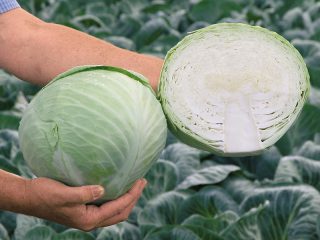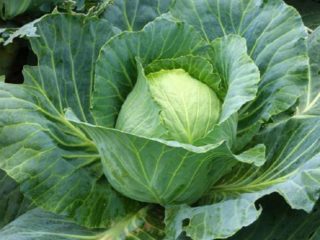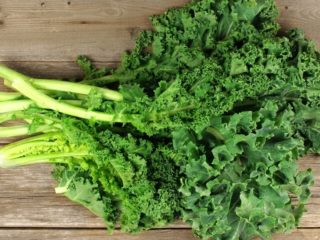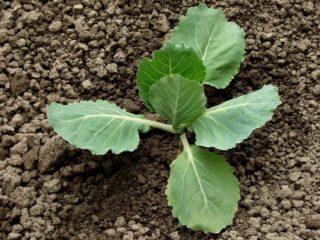Content
Broccoli in Russia is still far inferior in popularity to white cabbage and cauliflower, which have long been familiar to gardeners. But the situation is gradually changing, and this is facilitated by the regular appearance on the market of varieties and hybrids that combine high productivity, rich chemical composition and good taste with “marketable appearance”, keeping quality and ease of cultivation. The Monaco F1 broccoli hybrid meets all these criteria. It was created in the Netherlands, but quickly and successfully took root in Russian regions with very different climates.
Description and characteristics of broccoli Monaco F1
Monaco F1 is a hybrid of first generation broccoli cabbage, created by one of the world famous Dutch agricultural companies - Syngenta Seeds B.V. It went on sale in its homeland in 2008, at which time an application for official registration in the Russian Federation was submitted. All necessary variety tests were completed in 2012, and from that moment on, hybrid broccoli was listed in the Russian Register of Breeding Achievements.
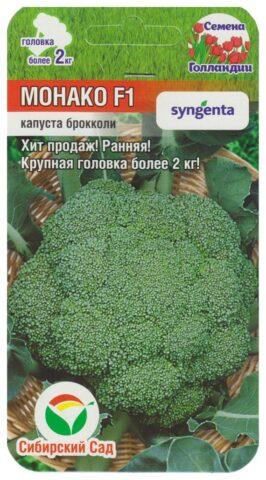
Now you can purchase domestic seeds produced under license by the Siberian Garden agricultural company
It is officially recommended for cultivation by amateur gardeners.The most preferred regions for its cultivation are not indicated: Broccoli Monaco F1 has adapted well both in the south and in areas with a much more severe climate (Urals, Siberia, Far East, North-West).
Monaco F1 is a late-ripening hybrid. It takes 115-125 days for the heads to mature. This is due to the feature that distinguishes it from most other varieties of broccoli. When the head is cut off, “additional” smaller ones on the side branches of the stem are not laid, which is logical: they probably will not have time to ripen before frost.
The rosette of leaves of the Monaco F1 broccoli is powerful, but relatively compact, semi-raised. The leaves are medium-sized and have a typical cabbage color. There is also a characteristic “waxy” coating, a slight “bubbling” of the surface and “wavy” edges.
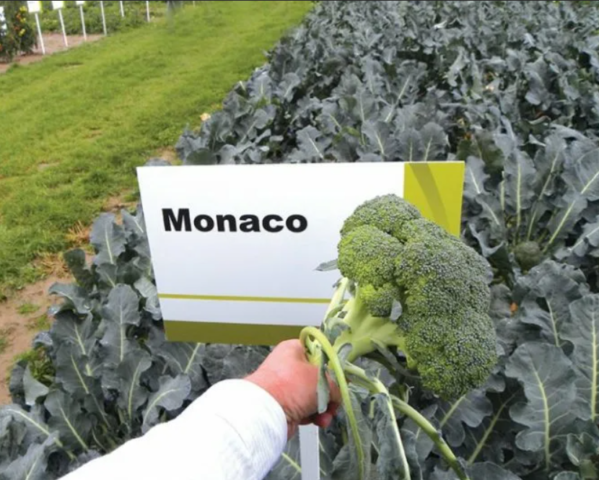
The plant reaches a height of about 50 cm, forms a single stem
The average weight of Monaco F1 broccoli heads is 0.6 kg. They are round in shape (less often dome-shaped), very dense, but at the same time juicy grayish-green in color. The “lumpy” surface is not very pronounced. Cover leaves are absent.
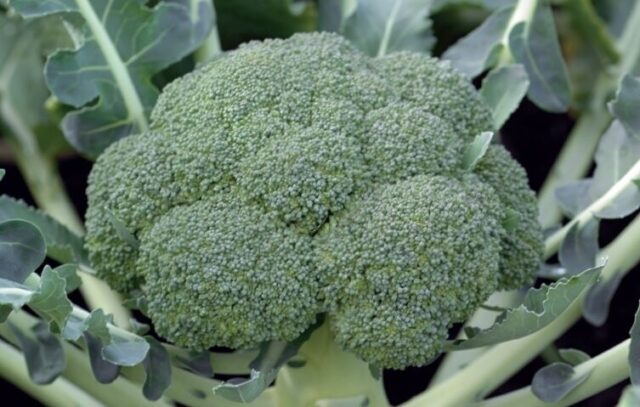
In very favorable conditions and with quality care, the heads can gain weight up to 1.5-2 kg
Productivity
According to the Russian State Register, the yield of Monaco F1 broccoli is 4.2 kg/m². The originator indicates different data in the varietal characteristics - 7-8 kg/m². Such a significant “scatter” can easily be explained by differences in climatic conditions.
Advantages and disadvantages
Broccoli Monaco F1 in Russia is not officially recognized as suitable for cultivation on an industrial scale and private farms, although it has good keeping quality and transportability. An obstacle is the real risk of crop loss when grown in open ground due to early first frosts, when the temperature drops sharply below -7 ºС.
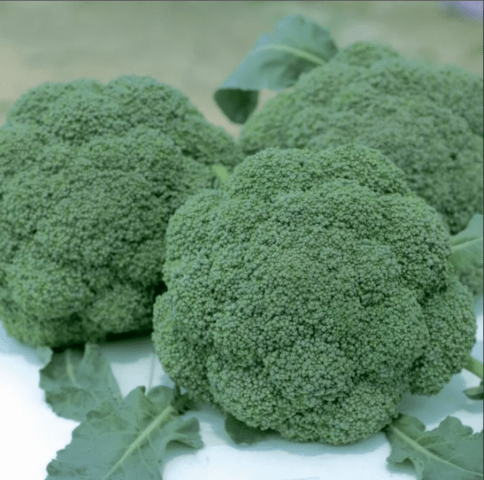
Broccoli Monaco F1 is easily “disassembled” into individual inflorescences, which is very convenient both for preparing any dishes and for freezing
Pros:
- the ability to adapt to different and not always favorable climatic nuances;
- endurance and “stress resistance”, good resistance to negative external influences;
- stable yield, little dependent on weather during the season;
- undemanding in terms of care;
- high resistance to fungal and other diseases typical of the culture;
- keeping quality and transportability of heads;
- external presentability of broccoli;
- versatility of purpose, suitability for any “culinary” purposes.
Minuses:
- long growing season;
- frequent cases of “attack” by pests typical for the crop, the need to apply appropriate preventive measures.
Landing Features
Due to the long growing season, Monaco F1 broccoli is grown mainly in seedlings. The procedure follows a standard algorithm, including pre-planting preparation of seeds in the form of soaking in a biostimulant solution. To avoid the picking stage, it is better to immediately plant them in small peat pots or plastic cups.
When to plant seedlings
Seedlings begin to be grown from the second half of March to mid-April. The specific period depends on the local climate. From the moment the seedlings emerge until the seedlings are transplanted into the ground, 40-45 days should pass. During this time, they develop 5-6 true leaves.

Before planting in the ground, it is advisable to harden the seedlings
Sowing in open ground
Growing Monaco F1 broccoli by sowing seeds directly into a garden bed in Russia can only be practiced in southern regions with a subtropical climate. They are planted in mid-April, following the recommended planting pattern.
Several seeds are sown in the “holes”. When a pair of true leaves is formed on the seedlings, “culling” is carried out, leaving one copy at a time. High-quality seedlings are used to fill the resulting “gaps”.
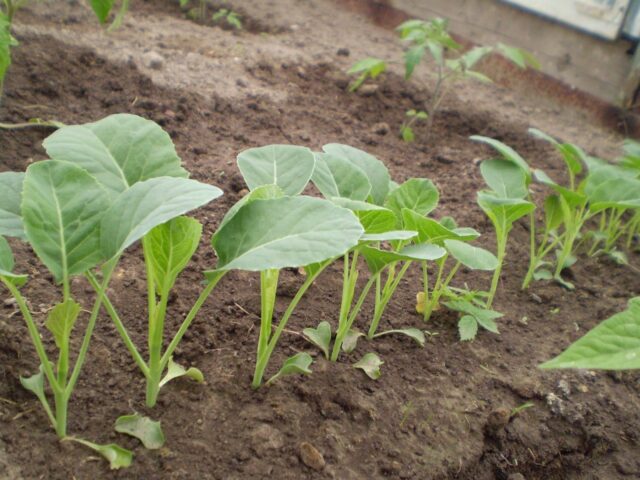
When planting seeds directly into the garden bed, the harvest will have to wait at least 15-20 days longer.
Features of care
To get a good harvest of Monaco F1 broccoli, it is enough to provide it with:
- Watering. Usually once a week is enough (2-3 liters per plant). If there is no rain and the temperature rises above 25 ºС, the substrate is moistened twice as often.
- Feeding. The first (nitrogen) is carried out 12-15 days after transplanting seedlings into the garden bed or 25-30 days after germination of seeds sown immediately in open ground. After waiting 15-20 days, then complex fertilizers containing potassium and phosphorus are applied at monthly intervals.
- Loosening and hilling.The soil in the bed with Monaco F1 broccoli is loosened to a depth of about 8 cm 2-3 times a month (ideally, after each watering). The rosettes are earthed up three weeks after transplanting to the garden bed and again after 1.5 weeks.
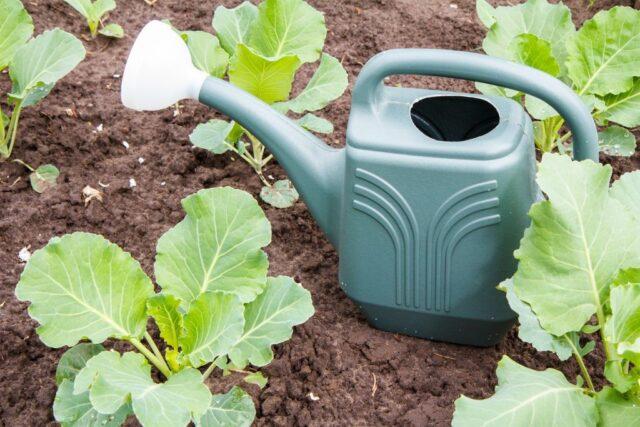
In addition to watering, Monaco F1 broccoli responds very positively to foliar spraying
Harvest and storage
Since Monaco F1 broccoli does not tend to bush, the entire crop can be harvested at one time. From the moment of transplantation into open ground, approximately 70-75 days pass.
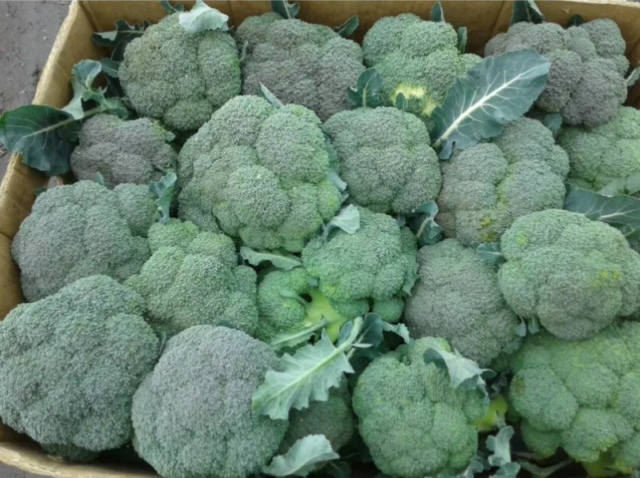
You can’t delay harvesting too much; “overripe” yellowing cabbage is no longer suitable for food.
It is best to cut the heads of Monaco F1 broccoli in the morning or late at night - at this time they gain maximum juiciness. You need to choose a moment when the weather is dry for at least several days in a row so that the cabbage does not become “saturated” with moisture: this shortens its shelf life and makes the taste less rich.
At room temperature, Monaco F1 broccoli will last for about two weeks. In a cellar, basement, or other place with an air temperature of 2-4 ºС, humidity 85-90% and good ventilation - up to three months. The heads are laid out in separate plastic bags, after making several holes in them and wrapping part of the stem with a damp cloth. Frozen Monaco F1 broccoli has the longest shelf life (about six months).
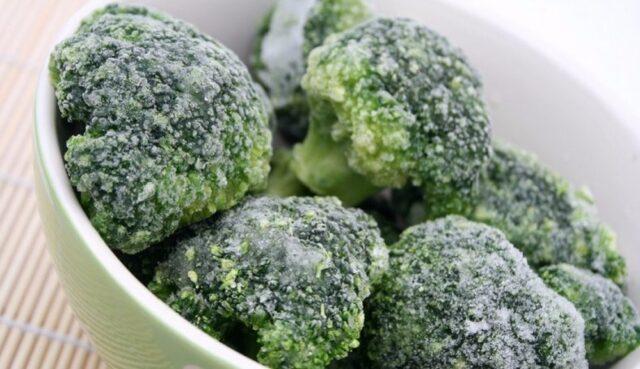
In bags and containers, broccoli is “packed” in small portions - defrosting and re-freezing are contraindicated for it
Conclusion
Broccoli Monaco F1 cannot be called unique or outstanding, but it is a very worthy hybrid, a kind of “workhorse”. Gardeners value it for its reliability, endurance and “stress resistance”, which allows them to count on a good harvest, even if they are not very lucky with the weather during the season, and there is not enough time and effort to follow all the rules for care.
Reviews from gardeners about broccoli Monaco F1




